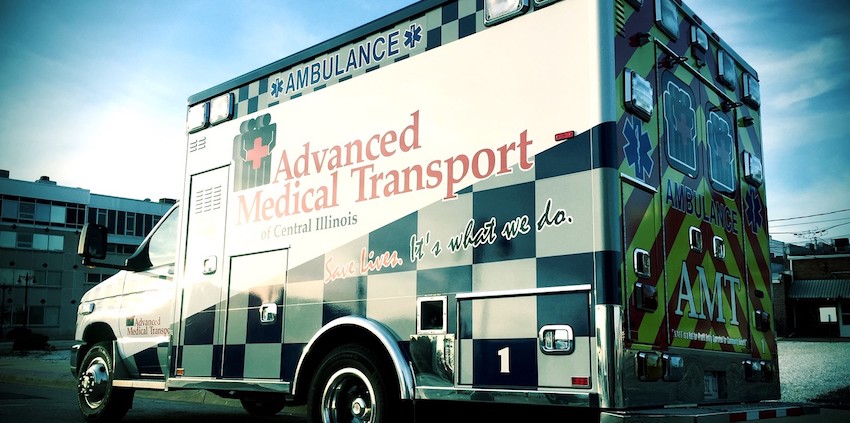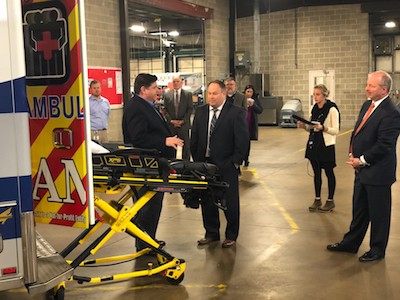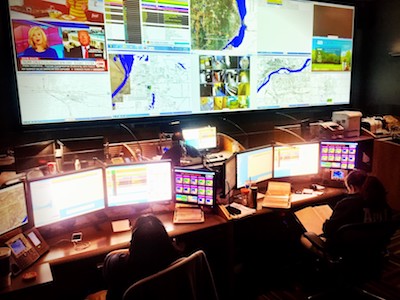
Meeting the community’s evolving needs on the frontlines of healthcare
More than 25 years ago, a group of healthcare officials and community stakeholders outlined a vision for a data-driven and evidence-based emergency medical services (EMS) system serving the residents of Peoria. Advanced Medical Transport of Central Illinois (AMT), a unique not-for-profit organization, was created to fulfill that vision. The result was the establishment of a fully accredited, high-performing provider of choice for emergency medical and healthcare transportation services.
The Evolution of EMS
What did EMS look like in 1991? In some ways, very similar to where we are now. People called for help, and ambulances responded. But like everything else, EMS has changed quite a bit since the early 1990s.
Technology has changed, for example, with automated external defibrillators (AED) bringing defibrillation first to basic life support (BLS) providers and then to the general public. Every ambulance is equipped with at least one computer displaying critical health information, allowing for real-time data entry and transfer. Clinical care has evolved based on research and evidence—including the use of mechanical compression devices and impedance threshold devices—which has improved patient survival rates for sudden cardiac arrest.
 Contemporary EMS systems were created to meet the needs of the acutely ill and injured, to “stabilize” patients and to transport them to the hospital. Many systems remain designed to treat every incident as a life-threatening emergency, despite the fact that a large percentage of 9-1-1 medical responses do not require immediate intervention. Subsequently, this provision of pre-hospital healthcare can be isolated at times from other healthcare and community interventions.
Contemporary EMS systems were created to meet the needs of the acutely ill and injured, to “stabilize” patients and to transport them to the hospital. Many systems remain designed to treat every incident as a life-threatening emergency, despite the fact that a large percentage of 9-1-1 medical responses do not require immediate intervention. Subsequently, this provision of pre-hospital healthcare can be isolated at times from other healthcare and community interventions.
Therefore, while recent decades have seen improvements in the delivery of emergency medical services in the Peoria region, AMT leadership has embarked on a deliberate journey to assure that EMS is an integral component of the community healthcare system. The model for this strategic initiative is rooted in the theory that a high-performing EMS system is “people-centered.”

Evidence-Based, People-Centered
The people-centered EMS system serves as the first line of a region’s healthcare system and plays a core role in supporting the well-being of residents and visitors through safe, data-driven, evidence-based approaches to prevention, response and clinical care. In a people-centered EMS system:
- Patients receive comprehensive care in the place that is most convenient and comfortable for them.
- Clinical care is driven by science-based research, with patients receiving interventions that are proven to produce desired outcomes.
- Patients are moved efficiently and safely using technology that minimizes the risk of injury to both patients and providers.
- People not only receive lifesaving and disease-treating care; they also receive care that reduces physical, emotional and psychological suffering. Care providers are given the education and training that adequately prepares them to meet the needs of the patient.
Some examples of AMT modeling a “people-centered” EMS system in the Greater Peoria region include the following initiatives:
- In partnership with Heart of Illinois United Way, AMT provides access to information and referral services via the 2-1-1 information program. Because this program is embedded within AMT, paramedics have access to current information regarding health and social services assistance for patients.
- The installation of ZOLL Road Safety devices in all ambulances. Much like an “electronic co-pilot,” Road Safety measures multiple data inputs to ensure ambulance drivers are following safe driving practices.
- In collaboration with the Peoria Area EMS Director, AMT developed and implemented an alternative destination policy which provides for the direct transportation of patients meeting specified criteria related to psychiatric or substance abuse issues to a community crisis center as an alternative to the Emergency Department.
- AMT launched Race to the Top, an evidence-based program to improve the survivability of sudden cardiac arrest.
Perhaps the most important principle of a “people-centered” EMS system is that it is innovative—able to adapt and adjust to new evidence, technologies, political dynamics and community needs. Without innovation and the support of local health system leadership and community stakeholders, this vision is not possible. As the pace of societal change continues to accelerate, AMT health providers and leadership maintain their commitment to delivering consistently outstanding, value-based health and community care within a “people-centered” system. iBi
Greg Chance is vice president of strategy for Advanced Medical Transport of Central Illinois.

